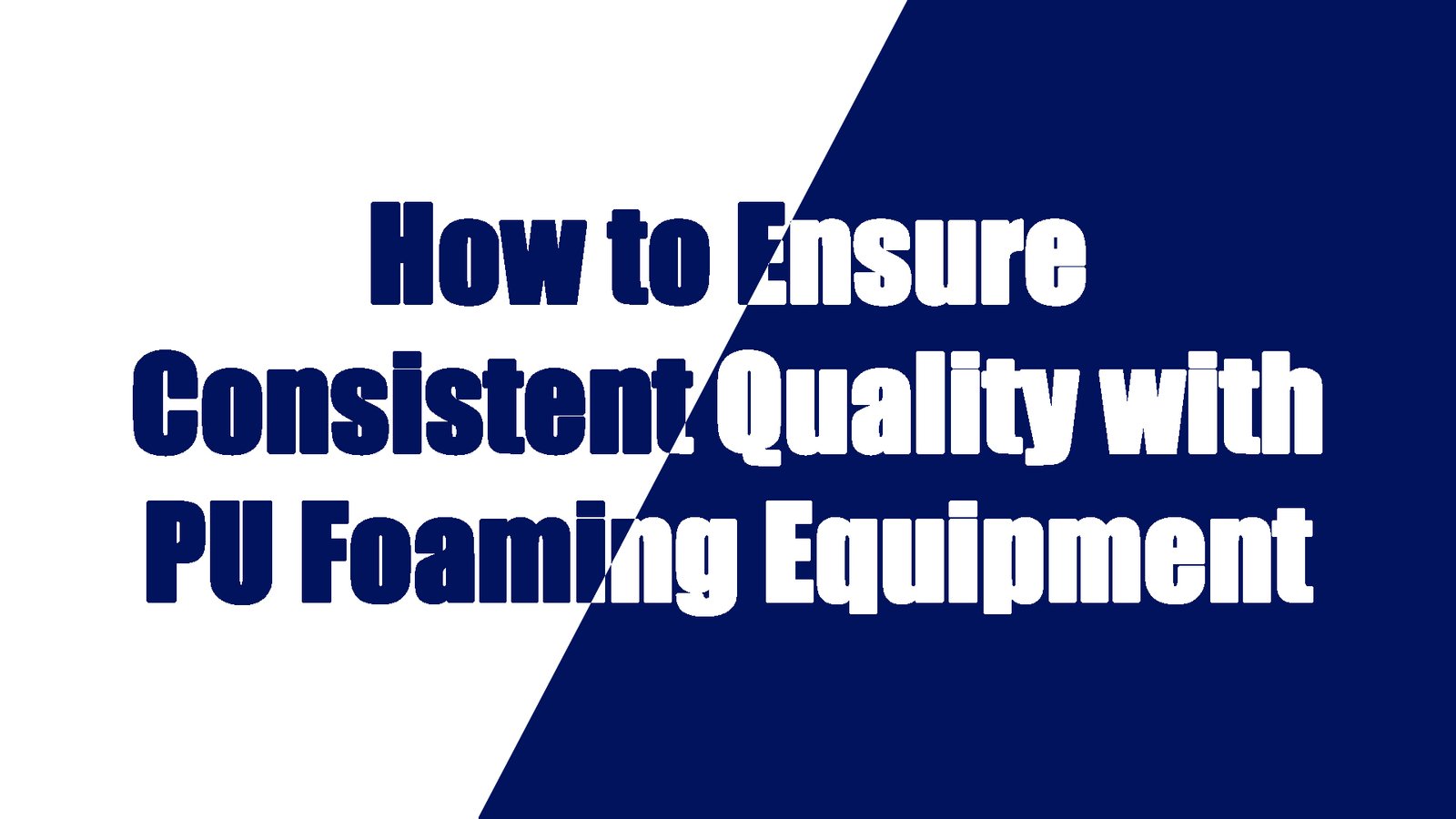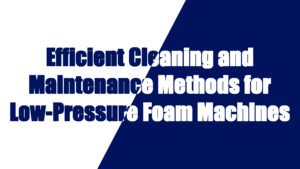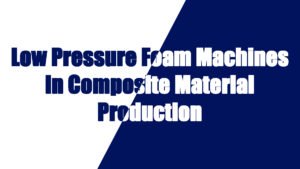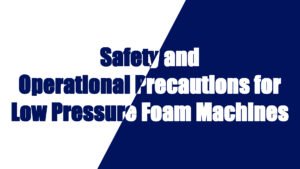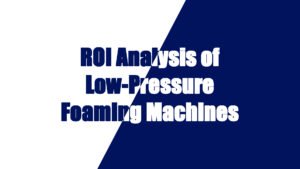To ensure the quality and stability of polyurethane foaming equipment, both manufacturers and operators need to focus on various aspects, including raw material management, production process control, equipment maintenance, and quality monitoring. Below is a detailed analysis to help you understand how to ensure consistent quality in every batch of polyurethane foam products.
1. Comprehensive Quality Control System
The quality control system of polyurethane foaming equipment is the foundation for ensuring the long-term stable operation of the equipment and the consistency of each batch of products. Quality control is not only reflected in the final product inspection but also in the strict management of every step from raw material selection to the production process.
Raw Material Selection and Management: The raw materials needed for polyurethane foaming equipment, such as polyether polyols, isocyanates, catalysts, etc., must be rigorously tested and screened. The quality of materials directly affects the foaming effect and the final performance of the products. During equipment manufacturing, it is essential to ensure that every batch of raw materials meets the quality standards. Advanced material testing instruments can analyze chemical composition, density, viscosity, and other indicators to ensure the stability and reliability of raw materials.
Production Process Control and Precision Management: Modern polyurethane foaming equipment typically features advanced automation systems that precisely control variables during the production process, including raw material ratios, reaction time, temperature control, and pressure adjustments. Through real-time data monitoring and feedback adjustment, human errors that could lead to inconsistency can be avoided. For example, equipment uses a PLC (Programmable Logic Controller) to control the amount and sequence of material injection, ensuring precise consistency in every foaming reaction.
Equipment Calibration and Testing: Before the equipment leaves the factory, manufacturers conduct rigorous calibration and testing. By simulating the actual production environment, they test key indicators such as pressure, flow rate, and temperature to ensure the equipment can maintain high-efficiency, stable operation over time. These tests typically include pressure tests, temperature resistance tests, and sealing tests to ensure the equipment can withstand high work loads.
2. Key Measures for Ensuring Long-Term Stability of Equipment
The long-term stability of pu foam machine primarily depends on regular maintenance, technical support, and equipment upgrades. Equipment stability directly determines production efficiency and the consistency of product quality.
Regular Maintenance and Inspections: Every critical component of the equipment may experience wear and tear due to prolonged use. To ensure the equipment runs stably, it must undergo regular maintenance and checks. For instance, sealing rings, nozzles, pumps, and valves need to be inspected and replaced regularly to prevent failures caused by component aging. Common maintenance items also include system cleaning, lubrication changes, and electrical component checks.
Advanced Fault Diagnosis and Warning Systems: Modern polyurethane foaming equipment often integrates intelligent fault diagnosis systems. By installing sensors and monitoring devices, the equipment can monitor critical parameters such as temperature, pressure, and flow rate in real-time. The equipment can automatically issue warnings before any abnormal situation occurs. This intelligent monitoring system reduces the risk of failure and promptly notifies the operator for troubleshooting, preventing production stoppages or quality issues.
Remote Monitoring and Technical Support: Many polyurethane foaming devices are now equipped with remote monitoring systems, allowing manufacturers or technical staff to monitor the equipment’s status via the internet and provide troubleshooting and technical support. This allows any issues with the equipment to be swiftly resolved, improving equipment availability and reliability.
Equipment Upgrades and Updates: As technology evolves, polyurethane foaming equipment also needs to be regularly upgraded. Optimizations in equipment control systems, sensor technologies, and automation can improve operational efficiency and stability. For example, adopting the latest temperature control technology and pressure regulation systems can more precisely control the foaming process, further ensuring consistency in each batch of foam products.
3. Technical Measures to Ensure Consistency in Each Batch of Products
The consistency of product quality is crucial to a company’s competitiveness. Whether producing rigid foam, flexible foam, or elastomeric foam, ensuring that each batch of foam products meets the established quality standards is a challenge that manufacturers must address.
Automated Ingredient Mixing System: To ensure precise raw material ratios, modern equipment is often equipped with an automated mixing system. This system automatically adds various raw materials according to the preset formula, avoiding errors caused by manual operation. Additionally, the system continuously monitors the material ratios for each batch, ensuring that the material proportions remain consistent. High-precision sensors and flow meters enable the equipment to control the flow rates and proportions of liquids and gases precisely, guaranteeing consistency in every batch of foam.
High-Precision Temperature Control System: Temperature control is critical in the polyurethane foaming process, as even slight temperature fluctuations can affect the quality of the foam. Therefore, modern equipment uses high-precision temperature control systems that can precisely regulate the temperature at various reaction zones throughout the production process. These systems include heaters, coolers, and temperature sensors, which ensure minimal temperature fluctuation during the foaming process, guaranteeing uniformity and stability of the foam.
Pressure and Flow Control Systems: Changes in pressure and flow rate during the foaming process directly affect the foam’s density and hardness. Polyurethane foaming equipment is equipped with advanced pressure regulation and flow control systems to ensure the stability of the foaming reaction. The equipment adjusts reaction pressure, flow, and other parameters to ensure that the foam’s density, hardness, and other properties remain consistent with each batch.
Online Quality Monitoring and Real-Time Adjustment: Polyurethane foaming equipment often comes with online quality monitoring systems. These systems monitor key quality indicators such as foam hardness, density, and adhesion in real-time, allowing any inconsistencies to be detected immediately. If quality deviations are found, the equipment automatically adjusts parameters to restore the foam’s consistency. For example, if the foam density deviates, the equipment will adjust the material proportions and temperature to bring it back to the desired state.
The quality and stability of polyurethane foaming equipment are essential factors for ensuring production efficiency, reducing failure rates, and maintaining consistent product quality. Through a comprehensive quality control system, regular equipment maintenance, and intelligent monitoring systems, businesses can significantly reduce equipment failure rates and ensure consistent product quality in every batch. As technology continues to advance, polyurethane foaming equipment will become increasingly intelligent and automated, providing businesses with more efficient and stable production support.


















